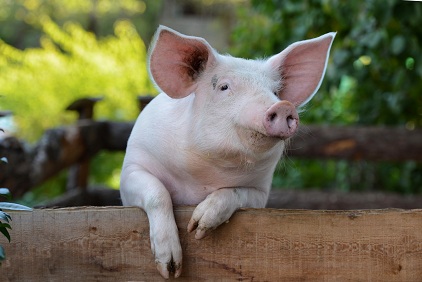Making the most of pig manure

Related topics
Agriculture & Forestry Innovation Bio-based Industries Innovation in SMEs Finland France Spain Switzerlanddate: 01/08/2014
Project: Integrated and Cost-Effective Solution t...
acronym: EFFICIENTHEAT
See also: CORDIS
Contact: Contact
Pig slurry is produced in massive quantities – more than 930 million cubic metres in the EU alone in 2008. Traditionally, farmers disposed of this mix of urine, faeces and waste water by simply spreading it on the ground as fertiliser. But an increase in intensive farms has left farmers with more manure than they can handle.
Most farms therefore move waste to a treatment plant, where volume is reduced. But transportation is not cheap (it accounts for 60% of processing costs), and the treatment process is cumbersome.
EfficientHeat improved the treatment technology, bringing down costs and energy consumption. By the time it ended in September 2013, the project had also demonstrated how to extract mineral components for use in fertilisers – one way farmers could make money from slurry.
The project’s technologies will also help farmers comply with EU regulations designed to tackle the social, economic and environmental challenges associated with the storage and handling of pig slurry, such as leaks and emissions.
Evaporation
The first priority is reduce the volume of the very liquid slurry and turn it into a more manageable consistency. While there are several technologies on the market, EfficientHeat chose evaporation as “a very logical choice because the thermal energy needed for evaporation can often be obtained from nearby combined heat and power plants at little or no cost”, explains Kleijn.
There is however a downside to evaporation technology – the manure tends to stick to the surfaces if it is not scraped off. Scraped surface technology gets around this set-back, but is much more expensive than the standard version.
The EfficientHeat team’s first success was cutting treatment costs by an impressive 40%. By improving the scraping devices used during the evaporation process, the project was able to step up heat transfer two- to threefold, speeding up the evaporation process. This, in turn, reduces energy consumption by around 25%, estimates project coordinator Arnold Kleijn of HRS Heat Exchangers in Spain. This figure can be increased to around 40% if the project’s other technologies are also used. The new scraping devices also shrink slurry volumes by 60%
EfficientHeat also succeeded in reducing the evaporation machinery in size, making it more practical for smaller farms. This means they may treat the waste themselves and avoid the costs of outsourcing.
Turning muck into money
For Kleijn, the EfficientHeat project was a means to create income from pig manure, as well as address the problems associated with it. These opportunities come in two forms – biogas and nutrients.
“A large biogas market is opening up in Europe – it will be big business,” he says, confident that pig farmers can benefit as pig manure is an ideal feedstock for biogas plants.
Biogas is produced when biodegradable materials, such as manure, ferment. The gases produced can be combusted with oxygen, allowing the biogas to be used as a fuel. A demonstration of the technology at a popular trade show generated interest from many in the biogas industry, says Kleijn.
Once the biogas has been extracted, the digested material can be treated with EfficientHeat’s technology, enabling biogas producers to manage the digested manure efficiently, and reducing their operational costs.
Nutrient recovery was another EfficientHeat breakthrough. The compound struvite, present in pig manure, contains phosphorous and nitrogen; both are worth a lot of money in the fertiliser business, explains Kleijn.
The team knew that adding magnesium compounds would make it possible to extract struvite, but needed to establish which compounds were most effective, and in which quantities. The technique is similar to that used for wastewater treatment, but has never been used in the pig industry.
Those farmers that have previewed the technology were suitably impressed, says Kleijn, with the consensus being that nutrient recovery looks very promising. Farmers would need to invest in this new technology, but could use it to create new value.
Project coordinator and SME – HRS Heat Exchanger – plans to take the EfficientHeat concept further. Ideally the company will start by installing one of its evaporators to “get the idea out there” before building more units on a large scale.
